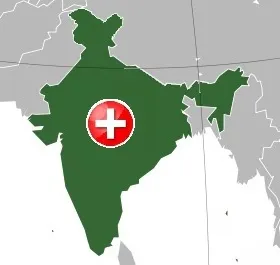Dialysis: Opportunity In Indian Healthcare Sector? And Kent Thiry

I recently had the opportunity to lunch with the legendary Kent Thiry, CEO of the leading dialysis chain, DaVita and one of the most respected business leaders USA. It was fascinating to understand his point of view on the market opportunity for healthcare entrepreneurs in dialysis and day care centers in general. I share some of these below.What creates opportunity in Indian healthcare?
Entrepreneurs in the healthcare sector in India often lament the lack of paying power amongst those who need health services the most. Kent pointed out that market forces determine healthcare in India. The customer pays, and hence he/she is demanding. Service providers are forced to be nimble and transparent. The US, with its government backed medical insurance has allowed service providers to build relatively bloated cost structures.
DaVita has been present in India quietly for 3 years as a non-profit, providing critical life-saving services through their limited presence so far in state owned hospitals. In a market with over 1 million customers needing dialysis each year and 7.5 million identified at risk, the market opportunity is immense.
Need to innovate for lower costs!
Supply is constrained by equipment and lack of trained specialists, not paying capacity. "Indian providers have innovated a lot to make dialysis an affordable service. But what we appreciate from our experience in India is the way providers treat the patient as a customer, who deserves the right level of service."
Building the village - It's all about the team.
Kent has built a much admired organization in DaVita, solving the ever present problem of maintaining quality service experience with a relatively low paid, large employee base. His approach to organization structure has been to recreate the environment of a village - where villagers lead simple lives and take care of each other. It has allowed DaVita to retain well-trained staff much more efficiently than competition.
With the demand supply gap for trained medical manpower on the rise in India, the question to as is who will invest for growth in healthcare? Can aggregate spend increase to create more jobs? Will government investment increase to expand infrastructure? Will niche service innovation in pockets like dialysis be the next new healthcare market?






